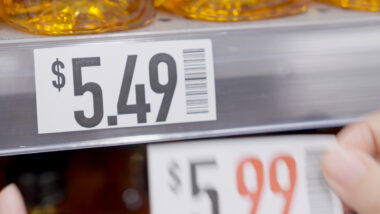Top Class Actions’s website and social media posts use affiliate links. If you make a purchase using such links, we may receive a commission, but it will not result in any additional charges to you. Please review our Affiliate Link Disclosure for more information.
Being able to spot FACTA violation on your receipts can help keep your account information safe from fraud, and may even result in a financial reward.
There are federal laws in place to help protect consumers from FACTA violation, and business owners should be aware of these rules.
However, it is not always enough to assume that businesses will comply with FACTA rules. Indeed, this law is most effective when consumers are aware of the regulations themselves.
Knowing a few simple rules can help consumers spot a FACTA violation on their receipts, protect their account information, prevent fraud, protect the accounts of hundreds or thousands of other consumers, and even result in a financial award.
FACTA basics
The Fair and Accurate Credit Transactions Act, more commonly known by the acronym FACTA, was initially passed in 2003, and has been in full force since 2006. All businesses are now expected to fully comply with receipt machine specifications to avoid any potential FACTA violation.
FACTA rules were introduced in order to prevent credit and debit card information from being freely available on consumers’ receipts. Censoring card information prevents that information from being useful to those who would use it to commit fraud or identity theft.
FACTA violation rules
In order to avoid a FACTA violation, businesses are required to follow a specific set of requirements in the truncation (censorship) process. Truncation rules must be followed to the letter to ensure compliance. If not, businesses may be committing a FACTA violation and may be penalized as such.
Firstly, FACTA laws dictate that, on a receipt, businesses can print no more than the last five digits of a credit or debit card number. The rest of the card’s digits must be censored, often with X or * marks. Displaying more than these five digits, or displaying five digits from elsewhere in the card number, is a FACTA violation.
FACTA rules allow receipts to show fewer than these five digits, as long as they are not taken from elsewhere in the number. Many businesses choose to display only the last four digits of card numbers on customers’ receipts, since cards are naturally segmented into four-digit sections, like so:
**** **** **** 1234.
Since five digits are allowed according to FACTA rules, other receipts may look like this:
**** **** ***1 2345.
The other main aspect of FACTA rules it that businesses are not allowed to print any portion of a card’s expiration date. Businesses often censor this information like this:
**/**
or this:
**/****
Consumers who report violations of FACTA’s debit card receipt rules can help protect the information of other customers, and may even be eligible for some kind of financial award.
FACTA lawsuits
FACTA offers awards of up to $1,000 per FACTA violation. This award is offered due to the FACTA violation itself, and does not require having actually been injured by identity theft or another problem.
Proving that a business committed a FACTA violation is fairly simple. Take note of whether or not your receipts follow FACTA regulations for both card numbers and expiration dates. If they do not, then you may file a FACTA violation lawsuit against the business at fault.
Free FACTA class action lawsuit investigation
If you made one or more purchases and the retailer provided you with a receipt that contained more than the last five digits of your credit or debit card number or the expiration date, you may be eligible for a free class action lawsuit investigation and to pursue compensation for these FACTA violations.
ATTORNEY ADVERTISING
Top Class Actions is a Proud Member of the American Bar Association
LEGAL INFORMATION IS NOT LEGAL ADVICE
Top Class Actions Legal Statement
©2008 – 2024 Top Class Actions® LLC
Various Trademarks held by their respective owners
This website is not intended for viewing or usage by European Union citizens.
















5 thoughts onHave you spotted a FACTA violation on your receipt?
add me
Add me
Add me
Add me
Can you say about how many of these violations tend to be reported, i.e. How common, and is their a ballpark estimate on the compensation? I’m thinking that is determined by a formula involving how widespread the issue is, etc. are my assumptions somewhat reasonable?
Thanks for any info you can provide!
Melissa Rowe